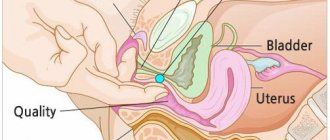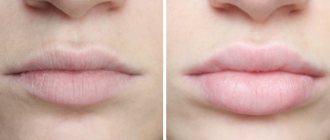In what cases may the bone fail to take root?
The bone may not take root in cases where it becomes infected, including when the patient violated the schedule for taking antibiotics or did not follow the doctor’s orders.
Much attention is paid to food intake: the patient can simply, out of forgetfulness, bite into something hard, and his stitches will come apart, and the material and bone graft will become infected through the open wound.
The above accounts for 90 percent of cases
when the bone may not take root.
Are there any contraindications to bone grafting?
Of course, there are contraindications to bone grafting. These include
:
- various chronic diseases, incl. diabetes mellitus with high sugar levels,
- the period when the patient takes a number of drugs, including chemotherapy,
- in the period after chemotherapy, when the bone cannot be “touched” at all.
Features of hygiene after bone grafting
After bone grafting it is recommended
:
- use of special surgical toothbrushes,
- the use of toothpaste should be limited, and even better, use special toothpastes for post-surgical interventions,
The main thing when carrying out hygiene is NOT TO INJURY
area of bone grafting! You should try to eliminate contact with this area or reduce it to a minimum.
When can you do without bone grafting?
You can always do without bone grafting when you can install an implant of the required diameter and required length into the remaining bone.
And, in fact, you shouldn’t do bone grafting just to assert yourself. Some doctors suffer from this, trying to prove to themselves or someone else how they can do bone grafting.
But, as they say, the best bone grafting is the one we don’t do: if the patient can be rehabilitated without bone grafting, then it’s better to do just that. Since volume can be added with soft tissues, connective tissue can be transplanted - a graft, or drugs can be added to replace the volume of soft tissues - and achieve an excellent result!
Prevention of complications
- do not eat for 5-10 hours after surgery;
- do not drink for at least 2 hours;
- wear a mouthguard if your doctor recommends it;
- use an irrigator in the first 2 days instead of brushing;
- rinse your mouth after eating;
- exclude hot, spicy, salty foods;
- postpone or reduce physical activity in the first week.
If the swelling does not subside within several days, there is pain, the temperature rises, and bleeding appears, you should immediately seek help. If the recommendations are followed, problems rarely arise.
To avoid complications, it is better to perform soft tissue plastic surgery before and after implantation in a highly reputable clinic.
Article Expert
Argunova (Sivova) Tatyana Anatolyevna Dentist-therapist, doctor of the highest category
Work experience: more than 6 years
What implants are used after bone grafting?
Are there “special implants” that are recommended in cases of bone grafting? Both with bone grafting and without bone grafting, it is necessary to use implants only from good, proven manufacturers, those that have a good clinical base. For example – Straumann, Nobel, Ankylos, Xive, Astra Tech.
There are a number of other implant systems that give good results. But at the German Implant Center we use only the best implant systems, only premium ones.
Sinus lifting – briefly about the method
When implanting in the lateral areas of the upper jaw, in the vast majority of cases, raising the level of bone tissue is required. The upper jaw is an air-bearing organ. It contains the maxillary sinuses, lined with ciliated epithelium, which is responsible for purifying the air we inhale. The sinus lift operation involves carefully lifting the mucous membrane with curettes and performing bone grafting. In fact, a sinus lift is a version of the GBR for the upper jaw in the projection of the maxillary sinuses. The success of bone grafting for alveolar process atrophy depends on the patient's compliance with doctors' recommendations, strict adherence to the postoperative regimen, non-smoking, and of course, on the experience and qualifications of the operating surgeon!
How is implantation performed during bone grafting?
Implantation during bone grafting can be carried out either simultaneously with bone grafting, or delayed - when the implants are installed in the new “grown” bone.
As an experienced implant surgeon, in my practice, in 80-90 percent of cases I perform bone grafting at the same time
with implantation.
I will explain why I perform plastic surgery with implantation at the same time, and what is the advantage of this approach. Bone grafting itself requires a long healing period, from 4 to 9 months. And if we maintain this period and then do implantation, then we have to wait another 4 months. That is, the time frame in this case increases significantly.
And if I do implantation along with bone grafting, then the implant takes root along with the bone. A good implant has an excellent osteogenerating surface, and when fused, an excellent result
.
This reduces the patient’s rehabilitation time. And most importantly, the patient DOES NOT NEED
second surgery. We understand that a large number of surgical interventions do not improve trophism, mucous membranes, or bone tissue.
Everything we do at the German Implant Center, from tooth extraction to implantation, is carried out as atraumatically as possible for the patient.
How many implants are placed during a total restoration?
We specialize very broadly in total implant rehabilitation. In the upper jaw, 6-8 implants are recommended according to our protocol; in the lower jaw, 6 implants are sufficient for total rehabilitation.
Often, implantation occurs simultaneously with the installation of temporary teeth, that is, the patient leaves the clinic “with teeth”, and not on the second or third day, but on the same day when implantation is done:
Preliminary implantation planning is carried out using CBCT, the implants are placed in the required positions.
After this, a surgical template is made, according to which the implants are installed. And based on the same computed tomography (CBCT) and images, a temporary structure is made that will be attached to the implants installed for the patient.
And it turns out the so-called “full case” is when the patient comes, if necessary, if circumstances require it, teeth are removed (or they have already been removed/lost earlier), implants are placed on the patient and an orthopedic structure is fixed - his new teeth.
Stages
1. Preparatory
The examination shows whether additional manipulations are needed, such as curettage or cleaning teeth from plaque.
2. Pain relief
The operation is performed under local anesthesia
3. Formation of flap, tissue extension
The epithelial tissue is capable of regeneration, and the patient's palate will not be damaged after the tissue is taken for transplantation.
4. Stitches and disinfection
The stitches are removed after 10-14 days.
Some clinics use a laser device instead of a scalpel. This reduces trauma and shortens the healing period, but increases the price of gum surgery after dental implantation.
On which jaw does tooth bone resorption occur faster?
How quickly does a deficiency of bone and bone tissue occur in the absence of a tooth?
In fact, tooth bone tissue decreases faster in the upper jaw, since the upper jaw is softer and more porous. In the lower jaw, the bone also disappears quite quickly, since the vestibular plate near the teeth is quite thin. Six months after tooth loss, quite severe atrophy of bone tissue occurs, and the atrophy progresses. And therefore, in order to avoid atrophy, it is advisable to do implantation simultaneously immediately after tooth extraction.
This format is the regular, daily work of the specialists of the German Implantology Center. For example, a patient comes with a crack in the root of a tooth - the tooth must be removed. We can go with two options:
Option 1.
We can remove the tooth and 3 months later implant the tooth into the patient.
But during these three months, shrinkage of the bone tissue still occurs, since - I said earlier - the vestibular bone plate is very thin. And in this case, the patient undergoes 2 surgical interventions
: the first is tooth extraction, the second surgical intervention is the installation of a dental implant.
Option 2.
In our practice, we recommend and practice the second option. This is a one-step implantation, when the patient has a tooth removed, an implant is installed, and in order to avoid collapse of the bone tissue in the places where the roots of the tooth used to be, these places are filled with a bone graft. Due to graft filling, we do not have tissue “collapse”; the contour of both the gums and the jaw bone tissue is preserved. Which, in turn, is very difficult to achieve with delayed, delayed implantation.
Who can undergo bone grafting?
Who are potential patients for bone grafting, and what are the age restrictions for it?
This is a bit of a tricky question :). The oldest patient I have performed bone grafting on is a 75-year-old patient, a wonderful, purposeful woman. She had bilateral terminal defects on her lower jaw. She really wanted implantation and refused a removable structure.
I performed bone grafting on this woman at the same time as implantation. And literally 6 months later she was fitted with prosthetics. And everything went great.
In the case of the patient’s age, the main thing is that he has no contraindications. Perhaps there are age restrictions, but they are not so pronounced, because, although trophism deteriorates with age, regenerative abilities decrease, but the main thing is the presence of contraindications. You need to look at the tests, and if the patient is healthy at 75 years old, then why not?
Plastic surgery of soft tissues in implantology
Author: Suheil Boutros and Georgios A. Kotsakis
Introduction
Patient satisfaction with implant treatment largely depends on how natural the implant-supported dentures look. The previous chapter discussed the indications for the use of soft tissue grafts in implantation, from restoration of mucogingival defects to increasing ridge height. Plastic surgery of soft tissues in the area of implants is a group of different techniques that differ in the timing of the operation and the type of soft tissue graft used.
Autogenous epithelialized palatal grafts or free gingival grafts (FGGs) were first proposed for root surface coverage in the 1960s and have since been widely used to increase the level of keratinized gingiva and cover exposed root surfaces. Their use is widespread in practice due to the high predictability of the future result, however, the color match with neighboring tissues is insufficient due to the brighter and more opaque color of the palate tissues compared to the gum, which limits the indications for use in areas where aesthetics are important.
The subepithelial connective tissue graft (SCT) described by Langer and Langer has better color matching and the technique for obtaining the graft is less invasive. Both SDT and SST require a sufficient volume of donor tissue, which may not be easy in cases with large defects and in situations where the patient does not agree to have a second donor site. All these concerns have prompted the use of acellular dermal matrix to treat recessions and soft tissue defects using porcine collagen matrix and tissue engineered cell therapy.
Types of soft tissue grafts
Free Gum Graft (FGG)
Historically, free gingival grafts were the first to launch a wave of development in periodontal plastic surgery, which is aimed at correcting or eliminating defects associated with developmental disorders, or disorders of an anatomical and traumatic nature. Bjorn described a technique for harvesting an autogenous tissue graft containing epithelium and lamina propria to restore the level of keratinized gingiva. Since then, SDT has been used throughout periodontal practice, both in the field of teeth and in the field of implants, with corresponding results. The cascade of tissue regeneration processes after placement of SDT in the recipient zone is carefully described; graft integration proceeds through the following phases: 1) plasma circulation, 2) vascular sprouting, 3) sprouting of connective tissue and vascular ingrowth, 4) maturation of connective tissue.
The main limitation of the use of such grafts is the aesthetic discrepancy between the graft and the adjacent soft tissues. It has been proven that the characteristics of the donor area dictate the phenotype of the transplanted tissue. Thus, an established graft often resembles the mucous membrane of the palate, from where in most cases the tissue is taken; the graft does not fit well with the surrounding tissues in texture and color. In addition, the relief of the palate tissue will remain after transplantation, so it should be removed in order to achieve a more aesthetic integration of the graft. Despite all the aesthetic disadvantages, using this method you can achieve predictable results in increasing the volume of keratinized gums. The use of this method according to indications gives reliable results and is used to increase the area of keratinized gum before augmentation, for example, vertical bone augmentation, also for the purpose of reducing
How to do without bone grafting
Is it possible to do without bone grafting and sinus lift?
Yes, in some cases you can do without bone grafting. But you need to understand that if the patient does not have bone tissue, and we install an implant, the crown will hang over the gum, and something from food will constantly get clogged there. That is, it is aesthetically unsightly, and all the food will be stuffed there, the patient will always have a “pocket of food supplies” from yesterday and the day before yesterday.
Option with a smaller diameter implant
You can place an implant of a smaller diameter, and at the same time we can carry out soft tissue regeneration - replant the mucous membrane (this can be connective tissue from the palate, from the tubercle of the upper jaw). And thus we achieve replenishment of the volume of soft tissues. Due to this, aesthetics are visually improved and hygiene problems are eliminated.
Whenever it is possible to avoid various surgical procedures, but not at the expense of quality, then they should be avoided.
That is, surgery for the sake of surgery - it is not needed
.
Plastic methods
Soft tissue grafting uses several methods. Here are the most common methods of intervention.
- Tunnel. In this case, trauma to the oral cavity is minimized. The surgeon makes small incisions in the mucosa to access the tissue. The wound heals quickly, since the soft tissues of the oral cavity have an increased regeneration rate. The rehabilitation period is minimal.
- Soft tissue grafting uses an autograft. Healthy tissue is collected from the patient himself. This is the most reliable method, since the probability of engraftment tends to 100%.
- For deep correction of the soft tissues of the oral cavity, the method of free plastic surgery with a displaced flap is used.
The dentist chooses the methods of influence based on the characteristics of the situation. All procedures do not require general anesthesia. If you think you need soft tissue plastic surgery, contact our dental clinic in Tula.
Reasons to contact ICDI ROOTT
- The clinic uses unique methods of implantation, bone and gingivoplasty.
- The center is a member of the European organization of dentists Open Dental Community, which means it has access to new developments and methods
- The clinic's doctors have extensive experience working with bone and soft tissue plastic surgery.
- The clinic performs operations on patients who were refused elsewhere due to contraindications.
- ROOT is a multidisciplinary clinic - all services are provided in one place.
- The clinic uses an attractive financial policy, which makes the cost of services ultimately lower than the Moscow average.
- The clinic pays special attention to the safety of treatment through multi-level sterilization.
Implantation of chewing teeth - price in Moscow
The price for implantation of chewing teeth consists of the cost of the implant, dental crown and the doctor’s work. If you are diagnosed with a lack of bone tissue volume, the cost of the procedure will increase slightly. Estimated prices for implantation of chewing teeth in Moscow start from 30 thousand rubles per tooth and reach 60 thousand and above. In order to save significantly, you should pay attention to inexpensive implantation systems: MIS, Alpha Bio, Xive, Impro, Osstem and others.
Publisher: Expert magazine about dentistry Startsmile.ru
Accelerated rehabilitation
For patients who want to quickly overcome the period of operational inconvenience, our Center provides an accelerated rehabilitation complex.
- Injections of lymphatic drainage drugs The composition of the drugs includes biostimulants, peptides, a complex of microelements and vitamins. They improve blood and lymph circulation and have anti-inflammatory properties. Minimize swelling and hematomas, accelerate wound healing.
- PRP plasma therapy Blood plasma is rich in platelets, which use the body's reserve forces. The work of the immune system is enhanced, regeneration processes proceed faster. Swelling and bruising disappear, soft tissues heal faster.
- Microcurrent therapy Exposure of facial skin to weak currents activates cell function. Recovery processes are accelerated, blood circulation improves. Swelling and pain go away, spasms of the muscles of the face and neck decrease.
Minimizing swelling and bruising, reducing muscle tension is possible on the day of your visit
After restorative procedures, the condition improves instantly. You can lead your usual lifestyle - walking, going to work and visiting. But do not forget to follow postoperative recommendations to avoid complications!
Levin Dmitry Valerievich
Founder and Chief Doctor of the Center
Implants for chewing teeth - patient reviews
Patient reviews of the procedure for implanting chewing teeth are almost always positive, since today this technique allows you to be almost 100% confident in a good final result. Negative impressions are usually associated with the unprofessionalism of the doctor and an incorrectly performed implantation procedure. As for reviews of implants for chewing teeth from specific manufacturers, the leading brands include Nobel Biocare, Straumann and Astra Tech.
In any case, classical dental implantation can be performed only in the absence of serious contraindications, which include diseases of the immune system and periodontal disease, cancer and diabetes. If such restrictions exist, tooth restoration is carried out in other ways.
Contraindications
| Absolute (operation impossible) | Relative (the operation is temporarily postponed) |
|
|
Complications - when should you see a doctor?
If you experience any of the following symptoms, contact your doctor as soon as possible:
- After the 3rd day of surgery, pain gradually increases
. It is quite normal to experience minor pain for the first 2-3 days, but no more. - On the 4th day the swelling began to increase with an increase in body temperature
. Normally, it should subside on the third day. If it grows, then there is a problem. - After 4-5 hours, the surgical wound continues to bleed
. Minor bleeding in the first 2-3 hours is normal. But you should be wary if the wound continues to bleed. - Part of the face became numb, and there were difficulties opening the mouth
. This is due to stretch/compression or injury to the nerve. It occurs very rarely (in less than 3% of patients) and is associated with physician error. - The temperature rose sharply to 39° on the fourth day
. An increase in body temperature to 38° in the first three days after surgery is a completely normal reaction of the body to surgery. But if after three days you notice a sharp increase in temperature, then you need to consult a doctor. - Purulent discharge appeared from the implant site
. This indicates the presence of an inflammatory process due to infection of the hole.








